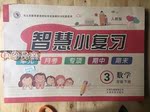题目内容
14.The greatest recent changes have been in the lives of women.During the twentieth century there was an unusual shortening of the time of a woman's life spent in caring for children.A woman marrying at the end of the 19th century would probably have been in her middle twenties,and would be likely to have seven or eight children,of whom four or five lived till they were five years old.By the time the youngest was fifteen,the mother would have been in her early fifties and would expect to live a further twenty years,during which custom,chance and health made it unusual for her to get paid work.Today women marry younger and have fewer children.Usually a woman's youngest child will be fifteen when she is forty-five and is likely to take paid work until retirement at sixty.Even while she has the care of children,her work is lightened by household appliances(家用电器)and convenience foods.This important change in women's way of life has only recently begun to have its full effect on women's economic position.Even a few years ago most girls left school at the first opportunity and most of them took a full-time job.However,when they married,they usually left work at once and never returned to it.Today the school-leaving age is sixteen,many girls stay at school after that age,and though women tend to marry younger,more married women stay at work at least until shortly before their first child is born.Many more after wads,return to full or part-time work.Such changes have led to a new relationship in marriage,with both husband and wife accepting a greater share of the duties and satisfaction of family life,and with both husband and wife sharing more equally in providing the money and running the home,according to the abilities and interest of each of them.
23.We are told that in an average family about 1990A.
A.many children died before they were five
B.the youngest child would be fifteen
C.seven of eight children lived to be more than five
D.four or five children died when they were five
24.When she was over fifty,the late 19th century motherD.
A.would expect to work until she died
B.was usually expected to take up paid employment
C.would be healthy enough to take up paid employment
D.was unlikely to find a job even if she is now likely
25.Many girls,the passage says,are now likely toD.
A.marry so that they can get a job
B.leave school as soon as they can
C.give up their jobs for good after they are married
D.continue working until they are going to have a baby
26.According to the passage,it is now quite usual for women toC.
A.stay at home after leaving school B.marry men younger than themselves
C.start working again later in life D.marry while still at school.
分析 本文主要写了19世纪末和现在妇女在就业和家庭生育等问题上发生的变化.
解答 23.A 推理判断题.根据句子A woman marrying at the end of the 19th century would probably have been in her middle twenties,and would be likely to have seven or eight children,of whom four or five lived till they were five years old一个在第十九世纪末结婚的女人很可能已经二十岁了,而且可能有七到八个孩子,其中有四到五个孩子活到了五岁,由此可以推断她的孩子在五岁以前夭折了,所以答案选A.
24.D细节理解题. 根据句子during which custom,chance and health made it unusual for her to get paid work在这期间,她的生活习惯、机会和健康使她无法得到工作.所以答案选D.
25.D 细节理解题.根据句子more married women stay at work at least until shortly before their first child is born很多已婚妇女一直工作直到她们的第一个孩子出生以前,所以答案D正确.
26.C 细节理解题.文章第二段提到妇女生活模式的变化对其经济地位的影响,也提到当今妇女婚后,至少在第一个孩子出生前仍工作.然后谈到"之后,妇女又返回全日或半日工作当中".所以C项正确.
点评 阅读理解题测试考生在阅读基础上的逻辑推理能力,要求考生根据文章所述事件的逻辑关系,对未说明的趋势或结局作出合理的推断;或根据作者所阐述的观点理论,对文章未涉及的现象、事例给以解释.考生首先要仔细阅读短文,完整了解信息,准确把握作者观点.

 智慧小复习系列答案
智慧小复习系列答案| A. | Above all | B. | All in all | C. | After all | D. | At all |
---Don't ask her.The issue of women's pay is _________ at the moment.( )
| A. | a wet blanket | B. | spilt milk | C. | a sleeping dog | D. | a hot potato |
| A. | 逃离 | B. | 分手 | C. | 脱离 | D. | 崩溃 |
| A. | weren't trapped | B. | wouldn't be trapped | ||
| C. | hadn't been trapped | D. | wouldn't have been trapped |